Wiki Project: Super '96
By Mento 0 Comments
Hey folks, it's been a while since I knocked together one of these for our old friend the Super Nintendo Entertainment System (a.k.a. the SNES, a.k.a. the Super Famicom), so let's quickly catch up to what this Wiki Project series is all about with a few links:
- Wiki Project: Super '93
- Wiki Project: Super '94 Q1
- Wiki Project: Super '94 Q2
- Wiki Project: Super '94 Q3
- Wiki Project: Super '94 Q4
- Wiki Project: Super '95 Q1
- Wiki Project: Super '95 Q2
- Wiki Project: Super '95 Q3
- Wiki Project: Super '95 Q4
I'm stoked that I'm now one step closer to completing the whole thing with the culmination of Super '96, which focuses on the final year that the SNES was anything close to a force to be reckoned with.
By the end of 1995, the SNES was reeling due to the double-whammy of the brand new 32-bit Sony PlayStation and Sega Saturn systems, which not only replaced carts with easy to produce (and considerably better storage) CDs but could handle a heck of a lot more graphically than the once powerful 16-bit market leader. However, it wasn't until 1996 that the console was truly doomed, as Nintendo itself moved onto greener and blurrier pastures: the Nintendo 64, which debuted in Japan in the June of that year and hit North America a few months later in September (meanwhile, us schmucks in Europe had to wait until the March of next year. I guess I just missed the 20th anniversary, huh?). Nintendo and their various subsidiaries and partners would've likely started the year already working on the 3D marvels to come for the N64, so that meant a scarcity of homegrown support for the SNES. However, there were still a number of studios who were close to completing some long-term projects, not to mention a few stragglers who were presumably hoping to dominate a market that was rapidly shrinking.
The overall total release number for 1996 was 180 unique games across all regions, not including localizations of games first released before that date, which is still a pretty good year for a console by any stretch of the imagination - fifteen games per month on average. It's a precipitous drop from the 412 distinct releases the SNES received in 1995, but it was still the fifth best year for the console overall, coming in just after 1992's 220 releases. Approximately a fifth of those 180 games originated in either North America or Europe; the rest, a vast majority, were Super Famicom debuts and, of those, all but seven would remain Japan exclusive. Localizations usually took a while, and after 1996 with the system's decline I guess most developers didn't see a point to it. 1997 will see even smaller returns, and there was barely a handful of games released between 1998 and 2000, almost all of which were digitally distributed via cart rewriting services or the Satellaview. I'll be sweeping all of those up in one final SNES Wiki Project very soon.
Despite this foreboding atmosphere, as the Ghost of Consoles Future stands ready to show the SNES the name on that fateful tombstone, it wouldn't be amiss to describe 1996 as a year of sleeper hits for the system: the aforementioned projects that had long been in development came to fruition, blessing the system with a few fantastic swansongs that drew on every last ounce of processing power and graphical panache that the SNES could muster. We'll see some of the most beautiful and technologically impressive games on SNES and Super Famicom in the following list of twenty, as well as some of the console's most off-beat. As always, this is a list of the most "interesting" games for the system - by my own vague metrics, this includes classics everyone should recognize, hidden gems that went unnoticed for years due to language barriers or waning interest in the system, and a handful of games that piqued my curiosity as I worked on their pages. Please enjoy.
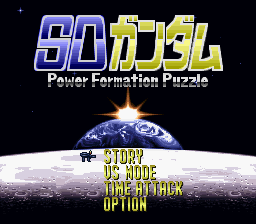 | SD Gundam Power Formation Puzzle: I mostly threw this in here to appease my good Calpal @buzz_clik, as it's one of his favorites. By most accounts a simple Gundam licensed puzzle game from crap merchants Bandai and frequent collaborator Tom Create, a few slight tweaks to the usual rules of the format turns it into one of the more interesting of the competitive block-breakers on the system. By electing to not break blocks for as long as possible, which disappear the usual way once they're lined up right, the player can "spend" full rows of untouched blocks to launch Gundams towards their opponent's base, and they can likewise send theirs to yours. Eliminating lines the traditional Puyo Puyo/Match-4 way actually hurts you, and any inadvertent chain reactions will greatly decrease the chance of you accruing enough rows to summon a Gundam in time to protect yourself, let alone put your opponent on the defensive. The challenge of the game isn't so much carefully landing these pieces so they don't all chain and tear your health bar to pieces, but fighting the compulsion to do exactly that - just like you've done in so many similar games past. That small twist alone is enough to make it one of the most challenging and tense competitive puzzle games for the system, and a fine example that ingenuity can come from any source, even a thrown together licensed game heavily cribbing from a well-populated genre. (Check out buzz_clik's original blog on the game over here.) |
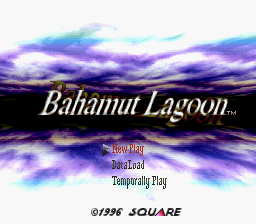 | Bahamut Lagoon: In many ways, the Super Famicom in 1996 belonged to a little game company called Squaresoft. Their enormous presence on the SNES was why it was such a significant blow to Nintendo when they decided to pick up sticks and move to the Sony PlayStation after a public falling out over hardware. While only one of the five games Square either developed or published for the SFC in 1996 actually came out in the US, they're all fairly well regarded and have seen fan translations in the meantime. The first of those five is Bahamut Lagoon, a remarkable strategy RPG that would hint at the studio's later success with Final Fantasy Tactics (though it required an influx of former Quest staff to really make that game pop). Bahamut Lagoon, like many Square games, saw a lot of cross-pollination with Final Fantasy alum: the game's director in particular, Kazushige Nojima, would later write or help write the stories for Final Fantasies VII, VIII, X and X-2. The game itself feels like a lost Fire Emblem entry, but centers itself around dragons and their riders in a world comprised of many floating islands. It's an attractive game, and a fairly involved one once it starts throwing its huge cast at you. |
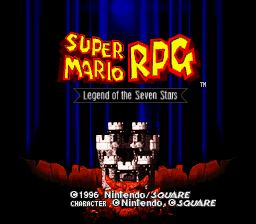 | Super Mario RPG: Legend of the Seven Stars: The third of Square's big-name releases for 1996, Super Mario RPG would be one of the few Japanese debuts this year that would see its way to a North American localization (Euros, meanwhile, got jack squat). It's fairly easy to see the crossover appeal here, as a traditional Final Fantasy turn-based RPG model is layered over the brightly colored adventures of Mario and crew as the Mushroom Kingdom is conquered by a mysterious force of sapient weapons. Even Bowser, Mario's boisterous nemesis, is evicted from his castle after an enormous talking sword impales it and refuses to leave, poaching many of King Koopa's troopas in the process. While the game is notable enough for being an exceptional RPG that greatly expands and humanizes Mario's world and the denizens therein, most folk remember the game fondly for its injection of humor: Bowser as a misunderstood curmudgeon, Mario as a world-famous hero solely because he can jump real good, and various ancillary characters designed to make the player laugh. Characters like the deranged manchild Booster, who lives in a giant tower full of sycophants and cannot understand why recent unwilling guest Princess Peach doesn't fall head over heels in love with him (honestly, in retrospect he's beginning to sound like a certain world leader) or the ridiculous chromatic Axem Rangers team, who can't help but pose for the heroes before attacking them. The game sets this tone early, with a friendly tutorial Toad inviting a goomba in for a combat demonstration, only to tell that goomba that he'd better scram because Mario already knows about timed hits. The game's a treasure even to this day, and the evident blueprint for the similarly subversive Paper Mario and Mario & Luigi RPGs to follow. |
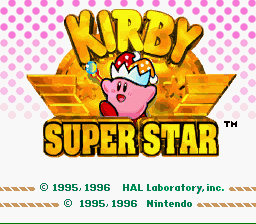 | Kirby Super Star: I maintain that Super Star is Kirby's creative peak, even as the little pink blob continues to be the biggest innovator among Nintendo's stable of recurring heroes to this day. Taking the relative simplicity of his earlier Dreamland adventures, Super Star expands the Kirby model in various other directions as smaller "experimental" chapters that collectively serve as a jam sesh of a compilation that's great value for money. Whether the pink puffball is taking on Meta Knight's flying fortress Halberd in an unusually narrative-rich quest of sabotage, or outrunning and outsnacking frequent rival King Dedede, or purloining a non-linear dungeon of its treasures, Kirby Super Star finds as many distinct applications as it can for Kirby's gameplay cycle of sucking up enemies and absorbing their powers. It's impressive how much game is actually in here, and how it never manages to falter once as it plays fast and loose with its various ideas and themes. |
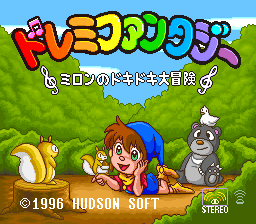 | DoReMi Fantasy: Milon no DokiDoki Daibouken: DoReMi Fantasy sees the triumphant return of Milon, of Milon's Secret Castle fame. It's not entirely clear why Hudson would bring back this sleepy hero of the NES era, but he's given a new lease of life in a game that's way easier to follow, and his brightly colorful fairytale world is far better realized on the SNES. Of course, there's something to be said for the original's uniquely befuddling charm, some of which has been lost by turning the game into a traditional side-scrolling platformer, but I hesitate to use the word "charm" to describe Milon's Secret Castle. "Obtuse nightmare factory" might be more apt. As well as your usual Super Mario style fixtures of jumping on enemies and a health system represented by your character's appearance (Milon doesn't get smaller, but his clothes change color), there's also a Bubble Bobble/Liquid Kids vibe as Milon traps enemies in bubbles and sends them flying with a poke, and a few traversal power-ups that allows for some fun level design. It's a standard-ass SNES platformer in most respects, but a notable one for its backstory and Japanese exclusivity. Well, exclusive until fairly recently thanks to some unexpected global Virtual Console releases. |
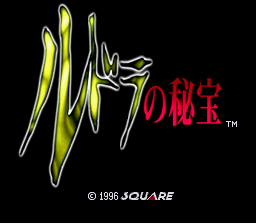 | Rudra no Hihou: Rudra no Hihou, or Treasures of the Rudra, would be the fourth Square RPG on this list, and the last to be developed by them directly. The product of Akitoshi Kawazu's own special branch of insanity within the Squaresoft offices, it's a singularly odd scenario-based RPG about averting a scheduled apocalypse that sees four discrete groups of heroes on simultaneous adventures, often intersecting or influencing the other parties. By playing each scenario, you begin to appreciate how your actions in the other scenarios have affected the overarching story, with dramatic shifts occurring due to specific timed events that another party may have triggered. The other significant element is its use of "mantras": spells that the player creates with text input, with specific affixes leading to modifiers that might involve additional damage or affecting multiple enemies at once, similar to how some Materia functions in Final Fantasy VII. This spell system is extraordinarily sophisticated for the Super Famicom and allows a savvy player to carry what they've learned into subsequent scenarios - learning the mantra for a powerful fire spell with an affix that greatly reduces its magic cost, for instance, will give you a huge head start with a fresh group. It's a very smart game, though one that would've been a nightmare to localize because of those mantras - it took fan translators Aeon Genesis many years to construct an English-language version of the system, making Rudra no Hihou one of the last great SNES Square RPGs to see a localization. (You can read a whole lot more about this game via this screenshot Let's Play I did.) |
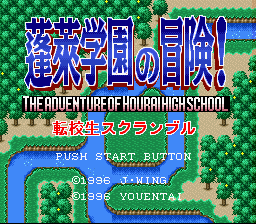 | Hourai Gakuen no Bouken!: After EarthBound became a semi-unexpected hit, there were a few experiments from other developers to tap into its surreal low-key energy and sense of humor to spruce up the otherwise stale turn-based JRPG model set by Dragon Quest/Final Fantasy so many years ago, and Hourai High School is a flawed game that nonetheless goes the gusto as far as sheer personality goes. As a problem student so obnoxious that an air stewardess throws you out of an airplane during the intro, your goal in the absurdly large titular school for misfits and weirdos is to survive until graduation, falling in with any number of bizarre player characters and after-school clubs across the game's city-sized campus. Hourai High School has some severe balancing and random encounter frequency problems, from what I've heard, but offsets this with in-jokes and goofs that even permeate the game's mechanics, not too dissimilar from that Barkley, Shut Up and Jam: Gaiden fan RPG. JRPGs are a dime a dozen on the SNES, but there's a few that stand the test of time either due to their high quality or because they're so unusual. Hourai High School definitely errs towards the latter more than the former, but it's worth a look. |
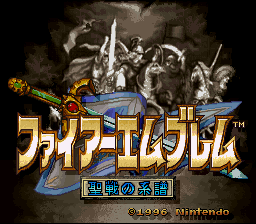 | Fire Emblem: Seisen no Keifu: The second of three 16-bit Fire Emblems, known over here as Genealogy of the Holy War even if no formal localization exists, isn't perhaps distinct within the series for its quality or memorable characters - it has plenty of both, but not to the extent that it topples the big favorites - but what it does offer is a model that's become familiar to recent FE converts: you start as one generation of warriors, forming relationships between them which occasionally turn romantic in nature, and the children of the partnerships you've nurtured end up becoming the second wave of playable characters after a time skip. Inter-group relationships have become such an indelible part of Fire Emblem, with love blossoming on the battlefield while you're struggling to keep everyone alive. Often, you fight to keep them alive not only because you've worked hard to build them into vital components of your war machine, but because you want that brash archer to have a happy ending with the fetching pegasus knight you paired them up with. Leaving bereaved partners in your wake certainly makes those permanent deaths all the more painful. |
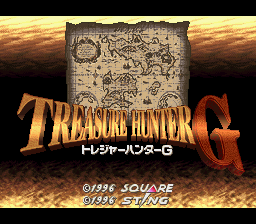 | Treasure Hunter G: The last of the Square-published games for the system, and for any Nintendo system for many years, Treasure Hunter G is an early effort from Sting Entertainment: a semi-obscure studio that creates a lot of very intricate strategy RPGs like Yggdra Union and Knights in the Nightmare. Like those games, Treasure Hunter G uses a modified turn-based system that also incorporates grid movement and finding the best position from which to strike, using an "action points" system reminiscent of the early Fallout games. The game has the barest whisper of a story and characterization - your heroes are literally called "Red G" and "Blue G" - and a slightly dated look with its pre-rendered CGI models-as-sprites in the Donkey Kong Country style. Even so, it's a game worth looking into just for that tactical combat system and for its music, created by a team of composers that includes Hitoshi Sakimoto (love that guy) and frequent partner Masaharu Iwata. |
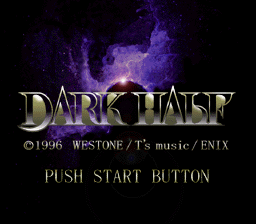 | Dark Half: A grim RPG that has you alternating both the bad guy and good guy, Dark Half frequently throws into troubling situations such as destroying the town you just saved or fighting your way through the cursed ruins of a village you had previously annihilated with the dark arts. You're always your biggest obstacle, regardless of which side of the light vs. dark dynamic you currently embody, and it's fascinating to see the world from the two disparate characters' eyes. The game also goes one step further in making its antagonist play differently from the protagonist: while the heroic Falco levels up, buys equipment and befriends other warriors who join him in his battles, the villainous Rukyu relies entirely on "soul points" for incredibly powerful spells and covers his flank with a whole menagerie of monster minions who act on their own in combat. The game also has a distinctive isometric look, still fairly rare at the time outside of a handful of games like Landstalker and Equinox, and some really extravagant backgrounds and prose. It's a macabre game with a whole lot of death and brooding, and one that's evidently had a lot of thought put into its creation. |
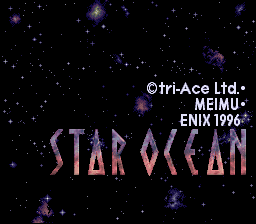 | Star Ocean: Tales saw the first game in its still ongoing franchise the previous December, and this year similarly sees the beginning of a JRPG staple that would persist to the present generation of consoles and potentially beyond. Star Ocean is the closest thing to a flagship series the inconsistent tri-Ace has (even if I'm more partial to their Valkyrie Profile games) and combines sci-fi with fantasy by creating these heroes of a futuristic age who end up on a standard fantasy planet, adapting their advanced knowledge and skills to survive in the alien environment. Or, in the case of this game, the reverse would happen and we'd see fantasy denizens that would unexpectedly find themselves embroiled in a galactic war that has chosen their planet as one of its battlefields. The peak of the series would be the PS1's Star Ocean 2, but the first game makes a spirited case for the uncommon genre-merging format and ended up being enough of a hit to spawn many sequels. The original Super Famicom Star Ocean has a fan translation, but you might be better off trying the officially localized enhanced PSP remake. |
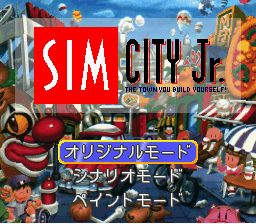 | SimCity Jr.: I throw in one of these every time I put together a list like this: the Japan-exclusive console port of an American/European-developed PC game. SimCity Jr. might have an unfamiliar name, but this is in actuality the 1995 PC game SimTown, which reduced the size of the urban locations the player must help prosper but adds more nuance with its individual buildings, stores and homes. The same goes for the population: though there are fewer people to appease, each of them have been given more of a personality and their own distinct needs and desires to cater towards. As a stepping stone to The Sims, the hugely popular people simulator, SimTown is also a perfect bridge for consoles because of the smaller number of moving parts to worry about. SimTown was originally promoted as a version of SimCity for a younger audience, hence the use of "Jr." here, and that makes it a better fit for a console port that would naturally have to scale back a lot of the advanced options anyway, as was the case with the system's less feature-rich versions of Theme Park, A-Train and Sid Meier's Civilization. |
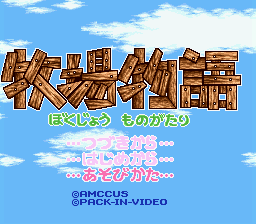 | Harvest Moon: 1996 would also introduce the world to Natsume's long-running bucolic simulation game, setting the blueprint for the many sequels and imitators to follow. As well as working the land to make it arable for any number of valuable crops, the player is also tasked with an endless checklist of goals to pursue in their down-time, whether that's clearing away rocks and trees and using them as building materials, raising livestock, or romancing any one of the eligible bachelorettes in the local town. It's a game built to be a little open-ended, and one where hard graft and perseverance is paid off with a beautiful and well-maintained farm. As someone who spent a lot of last year playing ConcernedApe's Stardew Valley, I can attest to the lasting power of this particular brand of life simulator. |
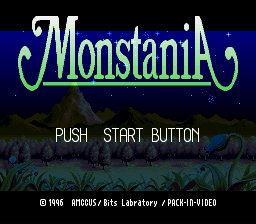 | Monstania: Monstania's a game I've been meaning to play for a while, because I hear it's one of a few SNES RPGs to not outstay its welcome. Longer games can still be engrossing right up until their end, of course, but there's something to be said for a compact experience that shows you everything it's got in a lean 8-10 hour playthrough before gracefully bowing out and letting you move onto the rest of your backlog. Monstania is a strategy RPG that works similarly to others of its genre, but greatly simplifies matters by only having two playable characters. Equally, the story - concerning a pair of friends and a fairy they encounter - and gameplay are fairly simple but in a charming way that sometimes incorporates environmental puzzles to solve. It's also another isometric game, which I'm always happy about. |
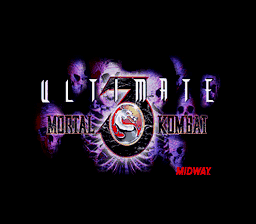 | Ultimate Mortal Kombat 3: UMK3 probably doesn't need much of an introduction from me, because for the longest time it was the greatest game in one of the most beloved fighter series, one so popular that it saw almost as many pale imitations as the king of fighters itself, Street Fighter (yes, I phrased it that way on purpose). UMK3 makes the wise decision to add Scorpion back into Mortal Kombat 3's roster, as well as many other new and familiar additions and a whole lot of secrets, Kombat Kodes and new fatalities besides. The game remains, as far as I know, the only Mortal Kombat that is a heavily revised enhanced version of a previous entry, something other fighter franchises do all too often. Given how much people dig this entry though, you wonder why Boon and co. don't do it more frequently. |
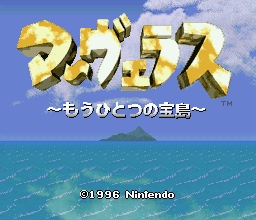 | Marvelous: Mouhitotsu no Takarajima: Marvelous isn't a title that commonly comes to mind, even among the more Super Famicom savvy of SNES fans, but its worth a look for being an adventure game that adapts many of the mannerisms of The Legend of Zelda: A Link to the Past, as well as imitating a lot of its visual design. While Marvelous itself has nothing in common with what is arguably the best Zelda game, the project lead was none other than Eiji Aonuma, the director of many recent Zelda games including Breath of the Wild. A man almost as integral to the Zelda franchise as Shigeru Miyamoto himself, Aonuma evidently caught the eye of the Nintendo bigwigs by directing a game that looked strikingly familiar to Link's 16-bit adventure, even if its actual plot concerns a trio of young explorers looking for a horde of pirate treasure on a remote island in a story far closer to an anime The Goonies than some fantasy epic about magical triangles and an evil pig wizard. Likewise, the game de-emphasizes combat and instead focuses on the type of environmental dungeon puzzles so prevalent in Zelda games, with a commonly utilized mechanic of separating the player's party of three so that they can explore and solve puzzles independently whenever the need arises. It's another game I've had bookmarked for a future playthrough, just because it seems like an unusual but important footnote in the long history of the Zelda franchise. |
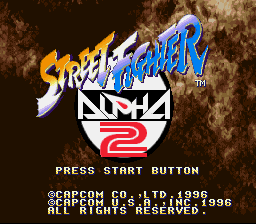 | Street Fighter Alpha 2: The first Street Fighter Alpha was a 1995 arcade game that rolls the chronology of Capcom's major fighter series back a few years to see what imagination-fuelled antics Baby Ryu and Baby Blanka got up to in the nursery when Nanny wasn't around to supervise. This sequel, which appeared the following year, saw a Super Famicom port that, well, served to highlight why the video game industry was ready to move on from the 16-bit era in 1996. That said, it was still a very playable fighter game even with some loading time issues and less fluid animations due to a special chip inside the cart that helped it catch up in some way to the 32-bit likes of the Saturn and PlayStation. This version would eventually become accessible in North America and Europe due to Virtual Console, where it was released in 2009 for Wii and again in 2014 for Wii U. |
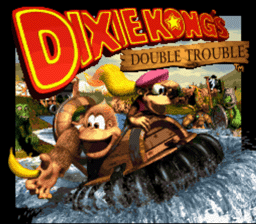 | Donkey Kong Country 3: Dixie Kong's Double Trouble: By the third outing, the DKC series was starting to feel its age a bit and the mix of challenging platformer action and sterling presentation wasn't quite as impactful as it once was. Additionally, taking out both the original game's leading apes for the ponytailed Dixie Kong and the mostly reviled Baby Kong didn't do the game any favors, nor did swapping out of all the extended Kong family for... pigs? Or maybe it was bears. It really has been a while since I've seen this game in action. Still, though, there's something to be said for the baseline quality of this series, which makes even its weakest sequel a force to be reckoned with. |
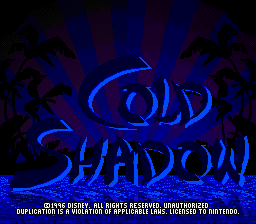 | Maui Mallard in Cold Shadow: I have absolutely no idea what spin-off or facet of the 1990s extended animated Disneyverse conceived the idea of turning lovable angry loser Donald Duck into a combination of Sam Spade and Zatoichi. With this new detective alias, Maui Mallard, who in turn has his own ninja alter-ego, Cold Shadow, Donald travels to a Caribbean island that is on the brink of a volcanic demise unless Donald/Maui/Cold can quickly recover a mystical idol, which contains the island's guardian, from an unknown thief. The player can switch between Maui and Cold Shadow at any time, both of whom have their own means of fighting enemies and getting around, and the game's presentation is as top-notch as so many other Disney games created in the 16-bit era. Like Aladdin, the SNES and Genesis versions are quite distinct from one another, with their different developers. Curiously, North America never saw the original Genesis version due to some oddly contentious licensing issues. I guess I can just about believe that publishers were falling over themselves for the exclusive rights to distribute a 16-bit Donald Duck licensed detective/ninja game set in the Caribbean. Maybe? |
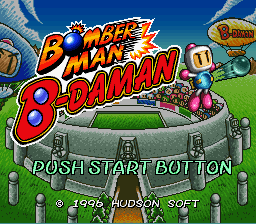 | Bomberman B-Daman: To cap off our little sojourn into the Super Nintendo Entertainment System's seventh year of being, we have Bomberman B-Daman, the first of the B-Daman video games. B-Daman is a long-running toy juggernaut with various anime adaptations, where tiny toys from various licenses - Hudson's Bomberman being the first - were built with little recesses in their stomachs which could be used to launch marbles. Various competitive playground games were built around these action figures, with video game facsimiles following quickly thereafter. B-Daman splits its focus between a single-player mode that relies on timing and spatial awareness for its puzzles, as the player finds the ideal time and place to launch a marble to trigger a chain reaction of floating bombs, as well as a four-player competitive mode akin to Atari's Warlords that is sheer pandemonium in practice. I'd never heard of B-Daman before working on this page, despite its apparent ubiquity, and while I think the link to Bomberman is tenuous at best this game does at least offer something a little different for fans of the little pyromaniac. |
